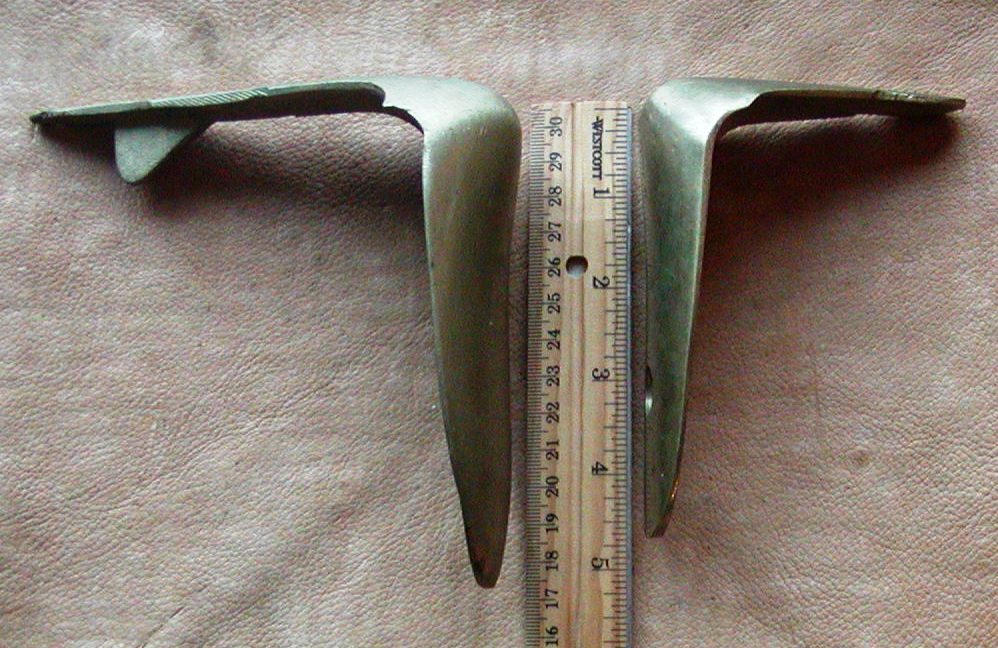- Joined
- Nov 26, 2005
- Messages
- 5,213
- Reaction score
- 10,838
Hi,
As many of you know, I restored originals, reworked repros, and built Brown Bess muskets. I love the guns, and deeply respect and admire the craftsmen working in the ordnance system that produced them. One of our forum members, Rich Pierce, donated a Reeves Goehring casting of a butt plate from an original long land pattern Bess that I will use on a pattern 1730 Bess to be given to a British re-enactment unit to outfit a new member who cannot afford an historically correct firearm. It will save him from having to settle for one of the inadequate commercial repros. I took the opportunity of having a mostly correct butt plate to show how the commercially made repros fall short and do not really respect the Bess design. The photos below show the Goehring butt plate with a plate from a Miroku short land Brown Bess repro. The Goehring plate is correct in length but the bottom needs to be widened a little with a cross peen hammer. The original short land pattern muskets had butt plates about 5 1/8" from heel to toe and the earlier patterns were a little longer. As you can see the, the Miroku is much shorter and that is true of the Pedersoli butt plate as well.



The result of the short butt plate is that you can never make the architecture of a Pedersoli or Miroku Bess look historically correct. The butt stocks will always be too small and with the large lock, make the muskets look a bit like the ugly German Potzdam muskets. The Brown Bess is an elegant and beautiful gun. Unfortunately, no modern commercial makers do it the justice it deserves.
dave
As many of you know, I restored originals, reworked repros, and built Brown Bess muskets. I love the guns, and deeply respect and admire the craftsmen working in the ordnance system that produced them. One of our forum members, Rich Pierce, donated a Reeves Goehring casting of a butt plate from an original long land pattern Bess that I will use on a pattern 1730 Bess to be given to a British re-enactment unit to outfit a new member who cannot afford an historically correct firearm. It will save him from having to settle for one of the inadequate commercial repros. I took the opportunity of having a mostly correct butt plate to show how the commercially made repros fall short and do not really respect the Bess design. The photos below show the Goehring butt plate with a plate from a Miroku short land Brown Bess repro. The Goehring plate is correct in length but the bottom needs to be widened a little with a cross peen hammer. The original short land pattern muskets had butt plates about 5 1/8" from heel to toe and the earlier patterns were a little longer. As you can see the, the Miroku is much shorter and that is true of the Pedersoli butt plate as well.



The result of the short butt plate is that you can never make the architecture of a Pedersoli or Miroku Bess look historically correct. The butt stocks will always be too small and with the large lock, make the muskets look a bit like the ugly German Potzdam muskets. The Brown Bess is an elegant and beautiful gun. Unfortunately, no modern commercial makers do it the justice it deserves.
dave




